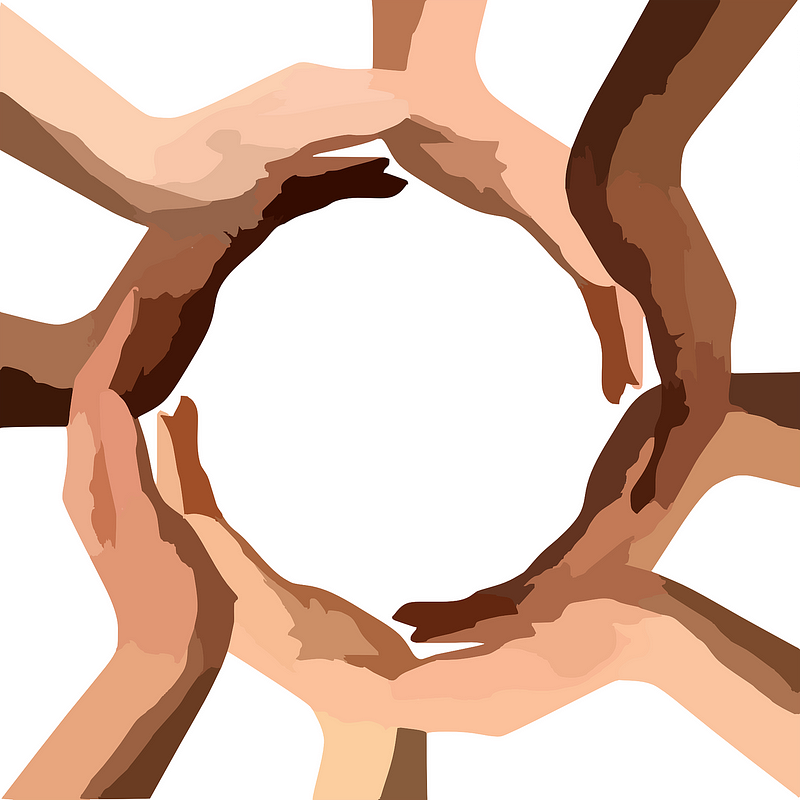Race as a social construct: That’s what genomics says
By Christie Ya-Chi Lee, Biology & English, 2022

If we were to examine the chemical composition of every living organism, we would find a common thread of carbon and hydrogen, and a mix of oxygen and nitrogen atoms. At its root, the biological composition of all humans consists of the same molecules. However, since the eras of Ancient Greece and Rome, the ancestral classification of human races has been inextricably linked to inherent inferiority or superiority of peoples. In the contemporary era, “race” has become a charged term with its historical connotations of worldwide oppression from imperialism to segregation. Unfortunately, the modern history of racial oppression problematically includes pseudoscientific and scientific justifications.
At its core, scientific writing is supposed to be neutral, objective, and unemotive. This principle means that biological findings, in an attempt to shed light on human genetic diversity, can be twisted in two ways: they either support Eurocentric moral and empirical epistemology, where there are naturally superior and inferior races, or they pursue a genetics- and molecular-based understanding of human differences. The idea that race determines biological superiority can create more inequality and separation than ever before, but genomics prove that humans are designed with many similarities. The first part of Race: The Power of an Illusion, a California Newsreel documentary, contrasted the predictions of racially diverse students on how different their DNA is to each other. Viewing the results of DNA sequencing analyses, most students were surprised to discover that their visible similarities — skin, hair, and eye colors — did not necessitate greater genetic similarity. Perhaps this finding is more indicative of how persistently society is inclined to forget race is associated with complex genetic differences.
Unfortunately, the modern history of racial oppression problematically includes pseudoscientific and scientific justifications.
In 2003, scientists completed the Human Genome Project, which sequenced all three billion human base pairs of DNA. This allowed scientists to examine how alleles, or DNA variants, of humans differ among different regions of the world. In 2012, Stanford scientist, Noah A. Rosenberg, published another study examining the allelic variations among populations of the seven geographic regions: sub-Saharan Africa, Europe, the Middle East and North Africa, Central and South Asia, East Asia, Oceania, and the Americas.
Rosenberg’s data included 783 microsatellite polymorphisms, or short tandem repeats, which are allelic variations that differ in the number of motifs. Motifs are nucleotide or amino acid sequence patterns that code for important structural or functional features. In his study, Rosenberg investigated whether regionally-exclusive alleles exist, and whether alleles can determine ancestry. He observed differences between genomes of two people in the same region, and two people in different regions. He found that there were no statistically significant differences, and that pairs of alleles from different populations are only slightly more different than pairs within the same population. Moreover, less than one percent of alleles are regionally-exclusive; there are very few genes that appear only in certain populations. This finding also indicates that, given a person’s ancestry, it is not possible to accurately predict the genotype of the person. Translated to modern racial thinking, not all people of the same race are the same, nor do people of different races bear large genetic differences between each other.
Rosenberg’s study and Race: The Power of an Illusion reflect that current racial categorization is not perfectly predetermined by genomics. Racial stereotypes are man-made constructs that bear no ground in biological structures. We are conditioned to believe a certain race of people has certain traits, but we neglect to understand how many genetic variations there are on a microscopic level. What we perceive does not necessarily correlate with scientific facts, and bearing that in mind, perhaps we can attempt to remedy the burden that years of racial thinking has borne on us.
Human Biology (2011). DOI: 10.3378/027.083.0601
